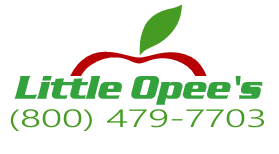Trader Joe's and Sprouts got a lot of ink this week after a Thasos Group report said they were the biggest losers, traffic-wise, in the wake of #AmazonWholeFoods.
But they weren't the whole picture. They the easiest to track.
I got a note from a friend of mine who runs a pretty fantastic produce stand who said his sales took an almost 20% hit, as did a few of his friendly competitors in the independent market business, in the weeks following Amazon's acquisition of Whole Foods.
One would have thought people who frequent a market like this wouldn't be lured in by the hype of $0.49/lb bananas.
Who needs $0.49/lb bananas, anyway?
I'm going to rant a little here for a minute.
Bananas are dirt cheap. Dirt. Cheap.

Even 89-cent-a-pound bananas are cheap.
I remember a conversation I had with a retailer about 10 years ago, off the record, about why a retailer will lose money on bananas rather than go higher than his competitors. This was during a particularly nasty growing season when banana growers were in force majeure on pricing.
“Everybody knows the price of bananas,” he told me. “Bananas are the one thing people use to gauge the value of the whole produce department.”
Can we please accept that consumers are working their way past this mindset?
After all, Millennials – the golden age group we're all trying to figure out – buy bananas significantly less often than any other age group, according to The Packer's Fresh Trends 2017, yet bananas are cheaper than ever. I highly doubt dropping the price even further is going to attract these shoppers.

Why don't Millennials buy bananas, anyway?
We have a couple of theories here at The Packer and Produce Retailer.
- They're into buying new things, like mangoes and premium apples.
- Younger Millennials, especially, are out of mom and dad's house buying on their own for the first time. They're probably bingeing on Count Chocula like I did my freshman year in college.
- They hate food waste.
Why do I bring this up? Well, think about how we typically sell bananas – six to eight pieces of fruit on a bunch. How often do you end up with a speckled piece of fruit or two?
What do you do with them? In our house we freeze for smoothies and muffins. Most people say banana bread, but tell me the last time you made banana bread, or looked at the calorie count of a loaf of banana bread. (It's 200 calories per slice, btw. YIKES!)
To a Millennial, a shopper who grew up with Reduce-Reuse-Recycle practically as gospel, throwing away rotten bananas is failure.
And when they read something like this article, which says wasting a pound of bananas is the equivalent of wasting a 42-minute shower's worth of water, the eco-guilt hits hard.
And that brings me to my final argument against dirt cheap bananas.
Fairtrade America sent me this study about the price elasticity of bananas. The GlobeScan research shows 64% of consumers surveyed would purchase fair trade certified bananas at a 10 cent price differential, and the number went up to 77% at a 5-cent increase.
Think about the most likely consumer to buy this type of bananas. Which group is most commonly associated with buying with their conscience?
Millennials.













